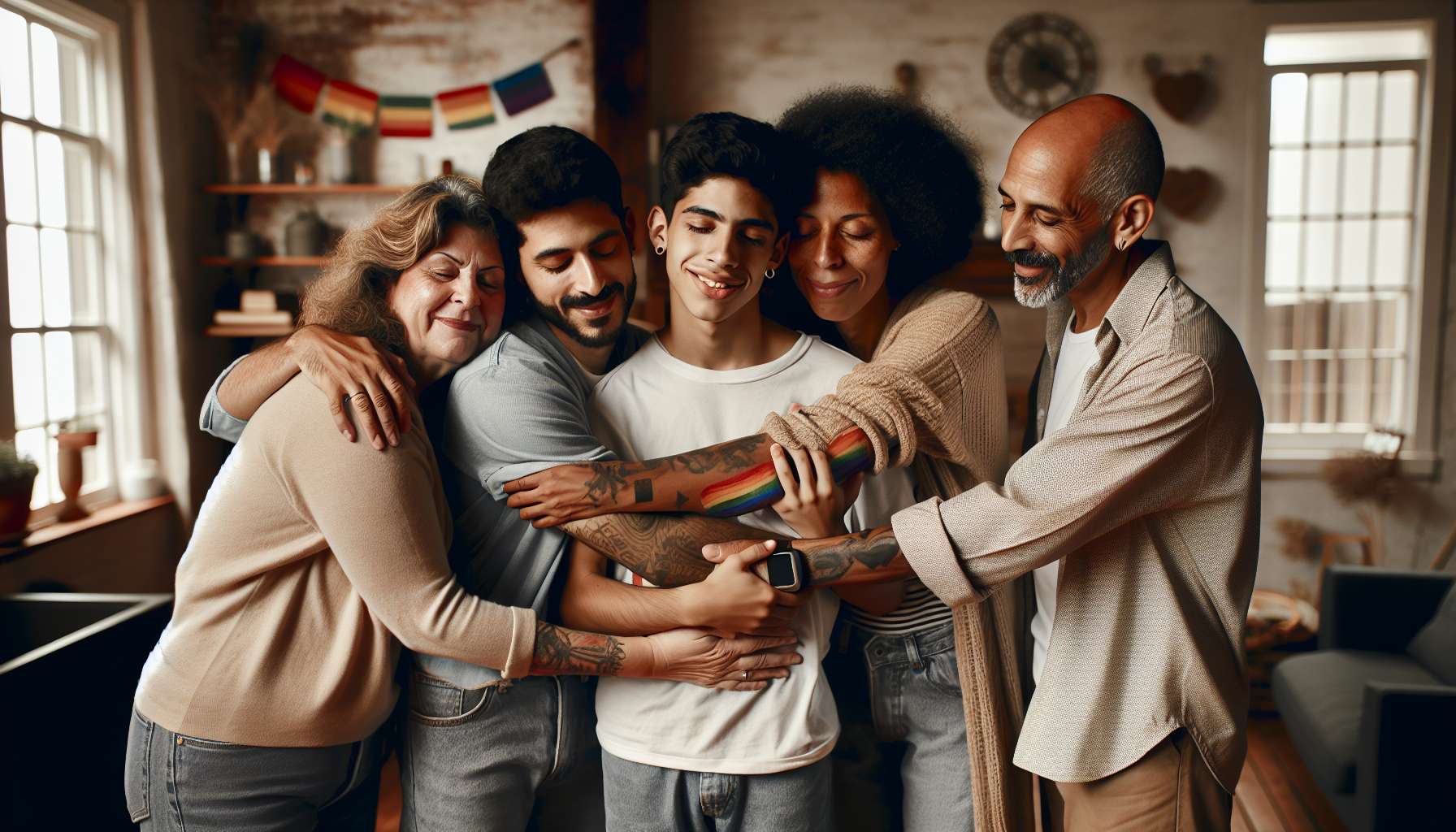Coming out about one’s sexual orientation or gender identity to family is often a crucial and delicate step for an LGBTQ+ person. The reactions of loved ones can have a considerable impact on the individual’s well-being and psychological balance. As a coach, your role is to help your client navigate these familial relationships in the healthiest and most constructive way possible.
It is common for LGBTQ+ individuals to dread their family’s reaction, fearing rejection, misunderstanding, or disappointment. These fears are legitimate, as unfortunately, not all families are equally open-minded and accepting. Your task will be to create a safe space where your client can express their fears and expectations concerning their family.
Together, you will be able to explore existing family dynamics and identify family members who might be most supportive. It can be helpful to confide in a potential ally, such as a brother, sister, or trusted cousin, before initiating discussions with parents. This will allow your client to feel more supported and validated as they go through this process.
If your client decides to talk to their parents, it’s important to prepare them for this conversation. You can work together to devise the best way to approach the subject, choosing the right time and place for discussion. Gathering resources (brochures, books, websites) that clearly and compassionately explain what it means to be LGBTQ+ can be helpful in aiding the parents’ understanding.
During the coming-out process, it’s essential to remind your client that they are not responsible for their family’s reactions. Some parents may need time to digest the information and adjust their perceptions. Others may react negatively, taken aback by surprise or out of a lack of knowledge. It will be your role to assist your client in managing expectations and not taking these reactions personally.
In cases where the family reacts poorly, it might be necessary to set healthy boundaries to preserve your client’s well-being. This could involve creating temporary distance, limiting topics of discussion, or involving a family mediator. Your goal will be to help your client find balance between self-assertion and maintaining family ties, without compromising their integrity.
Fortunately, many families eventually progress positively in their acceptance. Your task as a coach will be to encourage dialogue and empathy between your client and their loved ones. You can suggest resources to help parents better understand and support their LGBTQ+ child, such as support groups, books, or films that provide positive examples of inclusive family relationships.
Throughout this process, it is crucial to validate the emotions of your client and celebrate their victories, even the smallest ones. Every gesture of openness and support from their family deserves recognition and appreciation. Concurrently, you should ensure that your client cultivates other sources of support (friends, LGBTQ+ community, therapist) to maintain their stability.
Supporting an LGBTQ+ person in managing their family relationships following a coming out is a delicate and nuanced task. As a coach, your role is to provide unconditional support, communication tools, and a compassionate perspective to help your client build authentic and nourishing relationships with their loved ones, while respecting their identity.
Key Takeaways:
– Coming out about one’s sexual orientation or gender identity to family is a crucial and delicate step for an LGBTQ+ person, potentially having a considerable impact on their psychological well-being.
– The coach’s role is to create a safe space for the client to express fears and expectations, explore family dynamics, and identify potential allies.
– Preparation for coming out is crucial: choosing the right time, gathering resources, managing expectations. The client is not responsible for their family’s reactions.
– If the family reacts poorly, it may be necessary to set healthy boundaries. The objective is to strike a balance between self-assertion and maintaining family ties.
– The coach encourages dialogue and empathy, suggesting resources to parents. They validate the client’s emotions and assist in cultivating other sources of support.
– Support requires unconditional backing, communication tools, and a compassionate outlook to help build authentic relationships while respecting the client’s identity.
👉 To download docx (Editable) file click here : Click here
👉 To download PDF file click here : Click here
👉 To download MP3 file click here : Click here








